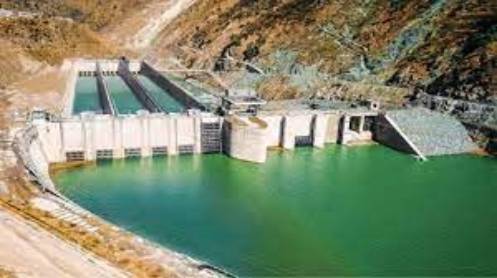The Neelum Jhelum Hydropower Project (NJHPP), with a capacity of 969 MW, has been completely shut down for over two months. Despite this, the root cause of the problem has not yet been identified.
According to a report by Dawn newspaper, officials familiar with the situation have stated that the issue appears to be more significant than initially anticipated. The 500 billion PKR project, located near Muzaffarabad in Azad Kashmir, might remain closed for another 18 to 24 months.
They indicated that the decrease in the Head Race Tunnel (HRT) pressure and the reduction of water in the 17-kilometer section of the tunnel suggest a major crack or collapse, though the exact situation remains unclear.
Despite its installed capacity of 969 MW, the project occasionally exceeded this level, reaching up to 1040 MW. When operational, it provided the national grid with over 5 billion units of electricity annually at an average tariff of approximately 10 PKR per unit, without incurring fuel costs.
An official noted that the closure of NJHPP results in a direct annual loss exceeding 55 billion PKR, with an indirect impact in the form of more expensive alternative fuels, which could cost between 90 to 150 billion PKR depending on the fuel source.
When approached for comment, NJHPP’s CEO Muhammad Irfan declined to speak, and WAPDA, after initially agreeing to respond, chose not to comment.
Delayed Investigations
On May 2, WAPDA officially confirmed the complete shutdown of the project to physically inspect the HRT pressure issue. They announced the development of a comprehensive plan in collaboration with project consultants and international experts to address the problem.
Subsequently, the Prime Minister visited the site on May 7 and announced an independent investigation. However, a formal committee was established two weeks later, headed by a former bureaucrat.
Currently, a two-member body is investigating the incident, tasked with determining the responsibility for the mishap. The committee, led by former federal secretary Shahid Khan and current Secretary of Water Resources Syed Ali Murtaza, was formed in late May to investigate the flaws in NJHPP’s construction post the April 2, 2024 incident.
The committee is expected to identify the causes of the tunnel blockage and review the delayed reports from the panel of experts hired in September 2022. Additionally, they will recommend appropriate remedial actions to address the HRT issue.
In response to a query, an official mentioned that while sabotage is unlikely due to strict security and extensive underground structures, it cannot be completely ruled out given the recent tunnel restoration efforts. He assured that the project is under strict surveillance, and any hidden issues are expected to surface soon.
Second Closure in Less Than a Year
According to WAPDA, sudden changes in HRT pressure were observed on April 2, 2024. Following consultants’ advice, the plant operated at a limited capacity of 530 MW from April 6 to monitor the pressure fluctuations, continuing generation without issues until the end of the month.
However, further changes in HRT pressure on April 29 led to a gradual reduction in generation, and the plant was completely shut down for a physical inspection on May 1 due to unsafe pressure levels.
WAPDA stated that the project includes a 51.5 km long tunnel system built in a seismically active and geologically weak region. The HRT spans 48 km, while the Tail Race Tunnel (TRT) is 3.5 km long, with about 90% of the project being underground.
Previously, in July 2022, the project was fully shut down due to significant cracks in the TRT, which took 13 months to repair. Electricity generation resumed in August-September 2023, with the plant reaching its maximum capacity of 969 MW on March 28.
Story by Khaleeq Kiani







